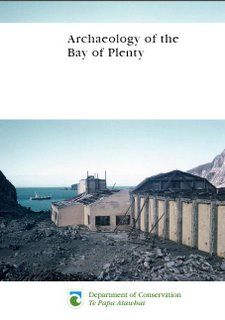Archaeology of the Bay of Plenty
By Garry Law
2008. 151 p. ISBN 9780478144291
This report summarises the state of knowledge of the archaeology of the Bay of Plenty, New Zealand, and reviews research themes and priorities of the past and for the future. The Bay of Plenty is favoured as a place to live today, but this has not always been the case. Its first settlement by Maori seems to have been sparse, whereas there are numerous sites from the later pre-European occupation period. The early economy was based round the marine resources and soils, which were well suited to cultivation of kumara. The first European visitors took relatively little interest in the region as it generally lacked the gold and accessible timber resources that drove early growth elsewhere, and cobalt-deficient soils made pastoral farming unattractive in much of the area. The development of improved transport resulted in greater growth, and pastoral farming increased as the lowlands and swamps were drained. In the second half of the 20th century, exotic forestry, energy and horticulture were the main drivers of growth in the region, which now has a rapidly increasing population. All of these stories are illuminated by the archaeology of the region, and there is great potential to tell more. To do this, research strategies and plans need to focus on gaining a better understanding of Maori settlement and resource use away from the coast, examining the factors leading to the widespread adoption of pa from about AD 1500, and making better use of the archaeological material arising from mitigation excavations of Maori sites.
Comprehensive recording of historic archaeological sites is also needed.
Part of the The catalogue of DoC Science and Research publications can be accessed online here. They appear in paper form but simultaneoulsy in electronic form. They are available from the DoC site in pdf form Link.
2008. 151 p. ISBN 9780478144291
